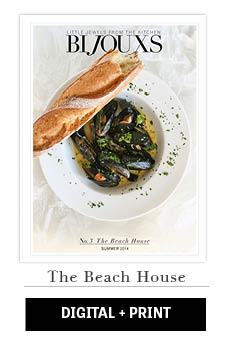At the surface my experience cooking tagines feels recent, that is within the last 10 years, but upon reflection my roots to Moroccan cooking run deep to the very beginning of my cooking experience. What is now over 30 years ago, I had the pleasure of taking a cooking class with Paula Wolfert. As a young bride and very young cook, I was thrilled to have the opportunity to take a class from this fabulous chef. Paula’s memorable class on Moroccan food transported me to the sights and smells of Tangier not only through the food, but also through her words. Her articles from Saveur magazine will transport you too. She shares that Tangier “was also the place where I found my vocation as food writer—where I discovered who I really was.” What a wonderful experience.
Tagines are exotic and comforting at the same time: the pungent spices, a juxtaposition of the salty and sweet, combined with meats and vegetables gently simmered tender in a delicate broth create a different take on a comforting stew. This simple chicken tagine is a Bijouxs I would like to share.
More info: Tagine is the name of the stew, and also the name of the beautiful glazed clay vessel in which tagines are prepared. No worry, you do not need a tagine (the vessel) to make a tagine (the stew) – a heavy Dutch oven with a lid will do. The things I love about tagines (the stews), besides the incredible layers of flavors, are that they are easy to prepare and utilize less-expensive cuts of meats, pure Bijouxs.
The basic technique for most tagines is rather simple, place the meat in the tagine (or dutch oven) add the vegetables, spices, and water, then cover and simmer, that’s it. Most tagines do not require an initial browning of the meat and utilize dried spices, olives, etc. many available in your pantry.
One ingredient that seems ever-present in Moroccan food is preserved lemon. Paula Wolfert has a great short-cut method, and I also will share a super-short cut method (honestly I use frequently) from chef Michael Chiarello, which takes only 30 minutes. Olives are another ever-present ingredient and this tagine calls for cracked green olives, but you can see I used a mix of olives, subject to those on hand. Best not to use flavored, stuffed or marinated olives – just plain pitted cracked olives.
I began my road to Moroccan food years ago, and I hope the road includes a journey so I may experience it first hand, now that would be an ultimate Bijouxs. I hope you enjoy the Bijouxs of tagines.
PS: I found the beautiful azure blue tagine pictured at Global Table in NYC.
As always, enjoy. B










I finally tried this recipe! It has been a work in progress because when I initially read it I decided that it’s time I started to take Moroccan food seriously. I’ve been a huge fan since my first trip to New York in 2008 when I tried it at a restaurant that my friend lived above in SoHo, but have never attempted to make it at home.
About a month and a half ago when I first found this recipe I preserved a couple jars of lemons. It wasn’t until last week when I went to visit my sister in Ottawa that I finally purchased the perfect Tagine and used my preserved lemons for the first time! It was a huge success and served with couscous, dried apricot, arugula salad and hummus was an amazing dinner. The flavour of olive, preserved lemon and warm spice was harmonious. Thank you again. I will be using this recipe often!
Hi Matthew! I am so happy that you enjoyed this recipe, it truly has been a little gem I go to often when craving the flavors of the olives, lemons and spices and this tagine is so easy. It sounds like you are well on your way with Moroccan cuisine! Reminds me to add another tagine recipe to Bijouxs – Moroccan cuisine is truly beautiful. Great hearing from you!